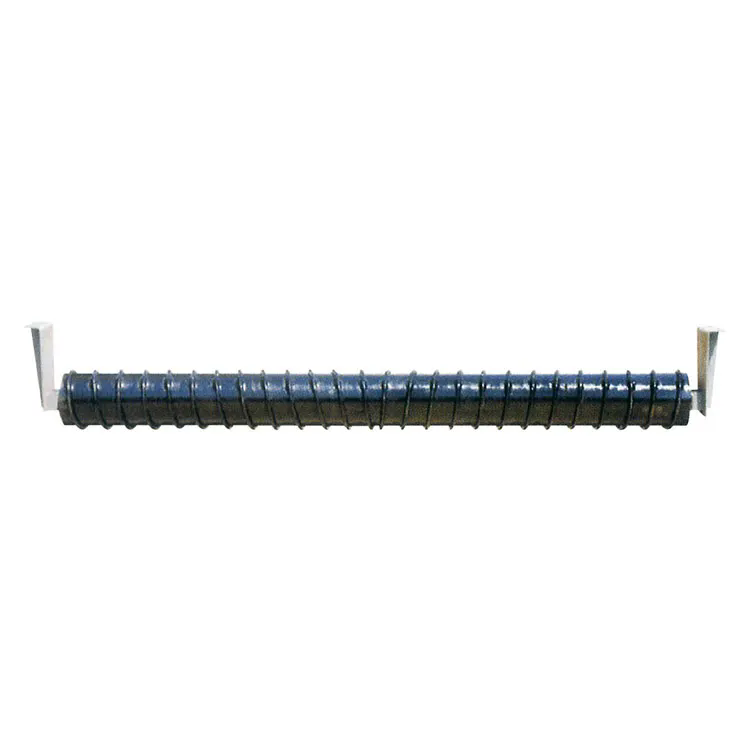Why Are Conveyor Idlers Crucial for Efficient Material Handling?
2024-11-15
In many industrial and manufacturing sectors, conveyor systems play a key role in moving materials efficiently across a production line. One of the most integral components of these systems is the conveyor idler. But why are conveyor idlers so crucial for efficient material handling?
In this blog, we’ll explore the importance of conveyor idlers, their function in material handling, and how they contribute to the performance and longevity of conveyor systems.
What is a Conveyor Idler?
A conveyor idler is a roller or set of rollers that support the conveyor belt as it moves along the system. Positioned at various points along the conveyor, idlers help guide and maintain the tension of the belt, ensuring smooth and efficient operation. They are typically mounted in frames that allow them to rotate freely as the belt passes over them.
Idlers are critical for reducing friction, supporting the weight of the materials being transported, and providing a surface for the conveyor belt to run smoothly.
How Do Conveyor Idlers Work?
Conveyor idlers are strategically placed along the length of the conveyor system to ensure that the belt runs smoothly and evenly. They are typically found in the following locations:
1. Carrying Idlers: These are placed along the conveyor to support the weight of the conveyed material.
2. Return Idlers: Located underneath the conveyor, they help return the empty conveyor belt to its starting position.
3. Impact Idlers: Positioned at loading points, they protect the belt from damage caused by heavy or abrasive materials.
4. Trough Idlers: Used in conveyors that handle bulk materials, these idlers help form the belt into a "trough" shape, ensuring the materials stay in place during transport.
5. Training Idlers: These help adjust the alignment of the conveyor belt, preventing it from drifting off course.
By providing the right support, idlers minimize belt wear and ensure consistent, efficient material movement.
Why Are Conveyor Idlers Important?
1. Reducing Friction and Wear
One of the primary functions of conveyor idlers is to reduce the friction between the conveyor belt and the rollers. As the belt moves, friction can cause wear and tear, which can lead to a decrease in efficiency and a shorter lifespan for the belt. Idlers help minimize friction, ensuring that the belt runs smoothly and lasts longer.
- How it works: The rollers on the idlers rotate freely, which prevents the belt from coming into direct contact with stationary surfaces. This reduces resistance and ensures the belt moves with minimal effort, resulting in less strain on the system and reduced power consumption.
2. Supporting Load Distribution
Conveyor belts are often tasked with carrying heavy loads over long distances. Without proper support, the belt can sag, causing uneven wear and potentially damaging the system. Idlers help distribute the load evenly across the length of the conveyor, preventing overloading in specific areas.
- How it works: Idlers are designed to handle varying load capacities and keep the belt properly aligned and supported throughout the conveyor system. This even distribution of weight ensures smoother operation, reduces wear on both the belt and the rollers, and prevents breakdowns due to overloading.
3. Enhancing Belt Alignment and Tracking
In many conveyor systems, keeping the belt aligned is essential to avoid unnecessary wear or accidents. Conveyor idlers are critical in ensuring that the belt remains centered and aligned throughout the entire system. When the belt drifts off track, it can cause it to rub against edges or misalign, which can result in damage.
- How it works: Idlers, especially training idlers, are strategically placed to monitor and adjust the belt's position as it moves. This helps the belt maintain proper alignment and stay on course, ensuring smoother operation and reducing the chances of accidents or equipment failure.
4. Protecting Against Environmental Factors
Conveyor idlers are often exposed to harsh environmental conditions such as high temperatures, moisture, dust, and corrosive materials. High-quality idlers are built to withstand these conditions, ensuring the conveyor system remains functional even in challenging environments.
- How it works: Modern conveyor idlers are made from materials such as steel, plastic, or rubber that are resistant to corrosion, moisture, and wear. Impact idlers, for example, are designed to absorb the shock of heavy or abrasive materials hitting the conveyor belt, protecting both the belt and the structure of the system.
5. Increasing System Efficiency
By ensuring smooth belt operation and minimizing friction, idlers help optimize conveyor performance. With less friction, the system requires less energy to run, resulting in lower operating costs and more efficient material handling.
- How it works: When idlers are properly maintained and functioning, the conveyor system works more efficiently, moving materials faster and with less energy consumption. This contributes to reduced downtime, fewer maintenance costs, and a longer lifespan for the entire system.
Types of Conveyor Idlers
Different types of idlers are designed to handle specific tasks, depending on the nature of the material being transported, the length of the conveyor, and the operating environment. Some of the most common types of conveyor idlers include:
1. Flat Idlers: Used for light-duty applications where minimal weight and pressure are involved.
2. Trough Idlers: Common in bulk material handling, where the conveyor belt needs to be shaped into a trough to contain the material.
3. Roller Idlers: Used in general applications, these idlers feature rotating rollers that provide support and reduce friction.
4. Impact Idlers: Designed to absorb the impact of heavy materials falling onto the conveyor belt, preventing damage to the belt and structure.
5. Return Idlers: Placed on the return side of the conveyor to support the empty conveyor belt and maintain tension.
Benefits of Conveyor Idlers
- Reduced Operating Costs: By lowering friction and optimizing belt performance, idlers reduce the power consumption of the conveyor system, saving energy and reducing overall operating costs.
- Improved System Longevity: Properly functioning idlers help extend the life of both the conveyor belt and the idlers themselves by distributing weight evenly and reducing wear and tear.
- Enhanced Material Handling Efficiency: Conveyor idlers ensure that materials are transported smoothly and quickly, improving the overall throughput of your operation.
- Less Downtime: With proper support and alignment, idlers reduce the likelihood of breakdowns and system malfunctions, minimizing downtime and keeping operations running smoothly.
Conclusion
So, why are conveyor idlers so crucial for efficient material handling? The answer is simple: they ensure that the conveyor system runs smoothly, efficiently, and with minimal maintenance. By reducing friction, supporting the weight of materials, improving alignment, and protecting the system from environmental factors, idlers are essential components in optimizing conveyor performance and extending the lifespan of the equipment.
Whether you’re handling bulk materials in a mining operation or managing an assembly line, understanding the role of conveyor idlers can help you ensure smoother operations, lower costs, and more efficient material handling. Investing in high-quality, durable idlers can pay off in the long run by improving productivity and minimizing downtime in your conveyor system.



